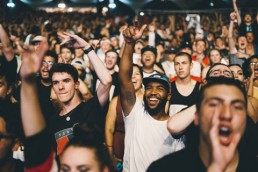Photo by Zakaria Ahada
How to Tell your story effectively using animation
By Libby Weiser
Animation is a wonderful tool for telling business stories, simply because it allows you to use artistic license to present reality with no creative boundaries. Animations can help people make emotional connections to things that wouldn’t usually feel emotive and they can create powerful, lasting impressions.
This article will help you successfully plan an animation that has lasting impact – because producing an effective animation is not straightforward; it requires precise planning and lots of creative thinking.
Conceptualise your animation
First, ask yourself: What is the end goal of the animation? Who are you designing this animation for? What do you want them to think or do once they’ve watched it? This is your ‘why’ – the reason why you’re making it and it’s critical to keep this at the forefront of your mind throughout the production process to make sure that you end up with something that delivers results. As you develop your ideas, have in mind a clear call-to-action for the end of your piece to guide viewers towards their next step and cause an effect.
Craft a script
Sketch a clear and structured storyline for your animation. A good script is the foundation of your video and it’s important to get this right before starting on the visuals. Make sure it’s concise and focused on the content that’s most important. Don’t try and cram everything in. Too much detail will make it hard to watch and reduce your capacity to make something people can really connect with. Take a step back if you can’t see the wood for the trees and get other people’s opinions. Fresh eyes are invaluable.
Pace your script with your viewers in mind. Animation is great for delivering stats, but too many in a short space of time can be tiring to watch. Make sure you aren’t overloading your audience with messages so there’s enough time for the narrative to really sink in.
And consider how the animation will be used. Will you need to make shorter social-media-friendly cuts of the piece to hook people into watching the whole thing? Remember, attention spans online are notoriously short.
Find your tone of voice
Next, you need to find your tone of voice – this needs to feel right for your brand and style of animation. Animation is a wonderfully diverse medium for use of humour and communicating with a sense of tongue-in-cheek, but it needs to fit with your brand voice and subject.
Your choice of music and voice over is key to creating the right feel for your animation. Take the time to try loads of different options until you find what truly brings it to life. Often, this may not be the style you’d choose to listen to in the car! Try to find music that matches the movement and pace of the animation – something that adds to the feeling or emotion you’re trying to create. The sweet spot you’re looking for is a moment when everything works together in harmony and forms something truly special. This can take time to perfect, so seek opinions of others and plan time for this stage in your schedule. If you get it right, the animation should in part be inspired by the music and vice versa, so don’t leave finding it until the end of the process or you’ll miss a trick.
Tell a story
No matter what the subject of your animation is, there should always be a hook or a story to engage the audience – you just have to find it and home in on it. Here, it’s key to think human. Viewers will probably respond better to the more human aspects of your product or offering so find the stories that will bring those aspects to life. How does it improve people’s lives? How does it help your customers?
Think of a storyline that will deliver your key messages effectively and interestingly. Facts and figures are aren’t always engaging on their own – it’s all down to crafting the delivery carefully and making it more personal or emotive for the audience.
For statistic-heavy content, you could introduce a fun character to help lead viewers through your story. Using a character can help the viewer build an emotional connection to the piece and make it more engaging & memorable. A detailed storyboard or animatic to illustrate the character’s personality and plan how it will be worked into the animation is critical. Changes at this stage are cheap – less so once hours have been spent crafting it…
Condense key messages
The magic of animation is that it can help the viewer to absorb more information in a shorter time as opposed to, say, reading an article. Use symbols and images to allude to messages, make the most of your audience’s attention span and make it easier for them to digest. You can hint at important information using visual cues – it doesn’t always need to be overtly stated in the voice over. The visuals can do a lot of the work independently if well designed.
Treat your animation as entertainment, not as a sales piece!
TV is peppered with fantastic animated adverts & news programmes that use animation to explain complicated things more simply. Don’t try to make your animation deliver too much. A simple concept communicated well can be much more powerful and if combined with further reading, you can always add the detail separately.
Of course, you want your customers to know all about your idea, product or service, that’s a given but be cautious not to throw in too many technical terms and detailed information. Viewers may simply switch off if too much is crowbarred in (remember those short attention spans) and you’ll risk losing them completely. When the animation ends, you want your audience to have enjoyed watching it.
Above everything, emotional connections tend to create the longest lasting memories. Use a little light-hearted humour if you can. This is where animation really wins as a tool because it gives you the ultimate freedom to communicate your messages.
A picture is worth a thousand words, after all!
The WHY Agency are creative communications specialists, creating engaging live & online events. We help companies & individuals tell their stories by creating inspiring, engaging content: video, animation, presentations, design & technical event production.



